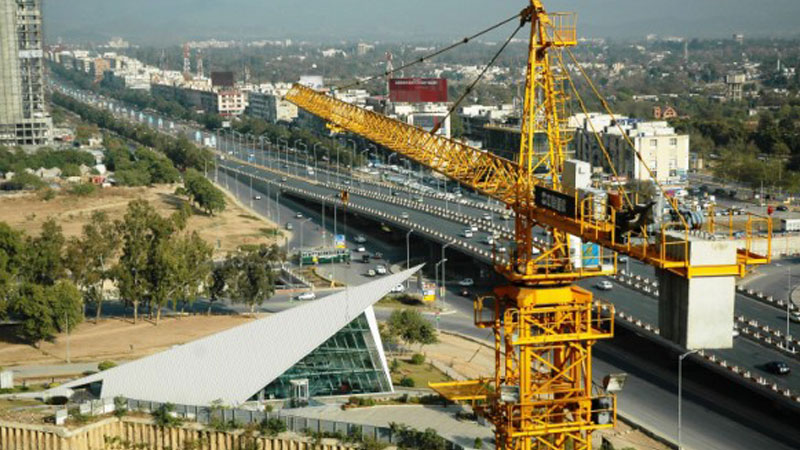The International Monetary Fund said the outlook for Pakistan’s economy was ‘favorable’, citing Chinese infrastructure investments among reasons for growth, but warned of risks to recent progress.
Confidence in insurgency-hit Pakistan is growing, with the IMF saying last year that the country had emerged from crisis and stabilized its economy after completing a bailout program, AFP reported.
However the IMF warned in a report on Friday that macroeconomic stability gains have started to erode and could pose risks to the economic outlook.
“Pakistan’s outlook for economic growth is favorable, with real GDP estimated at 5.3% in 2016/17 and strengthening to 6% over the medium term on the back of stepped-up China Pakistan Economic Corridor investments, improved availability of energy, and growth-supporting structural reforms,” the report said.
“However, macroeconomic stability gains ... have begun to erode and could pose risks to the economic outlook,” it added.
Prime Minister Nawaz Sharif vowed to boost the long-depressed economy after winning a third term in 2013.
Encouraged and undeterred by domestic debt of $182 billion, Islamabad set an ambitious yearly growth target of 5.7% for 2016/2017. The World Bank predicted 5.4% growth by 2018.
Hopes are pinned on the China-Pakistan Economic Corridor, a $46 billion initiative by Beijing that aims to link the Asian superpower’s Xinjiang region with the Arabian Sea through Pakistan.
The plan encompasses a series of infrastructure, power and transport upgrades that Islamabad hopes will kickstart the economy.
But experts say the deal is opaque, and much more transparency is needed before they can assess any impact for Pakistan including, for example, whether the $46 billion is an investment or a loan.
According to Friday’s IMF report, Pakistan’s current account deficit has widened and is expected at 3% of GDP in 2016-17 or more than $9 billion, driven by fast rising imports of capital goods and energy.
It said Pakistan’s foreign exchange reserves have declined in the context of a stable rupee-dollar exchange rate, urging Islamabad to allow greater exchange rate flexibility.
Over the last two weeks, official foreign currency reserves decreased by more than $1.5 billion. Pakistan’s total liquid foreign exchange reserves decreased to $20.157 billion during the week ended June 9 from $20.515 billion a week ago, the central bank reported.
Meanwhile, Pakistan will secure loans worth $600 million in the next 10 days from the Asian Development Bank to cushion its foreign currency reserves which started depleting again on the back of heavy debt repayments.


